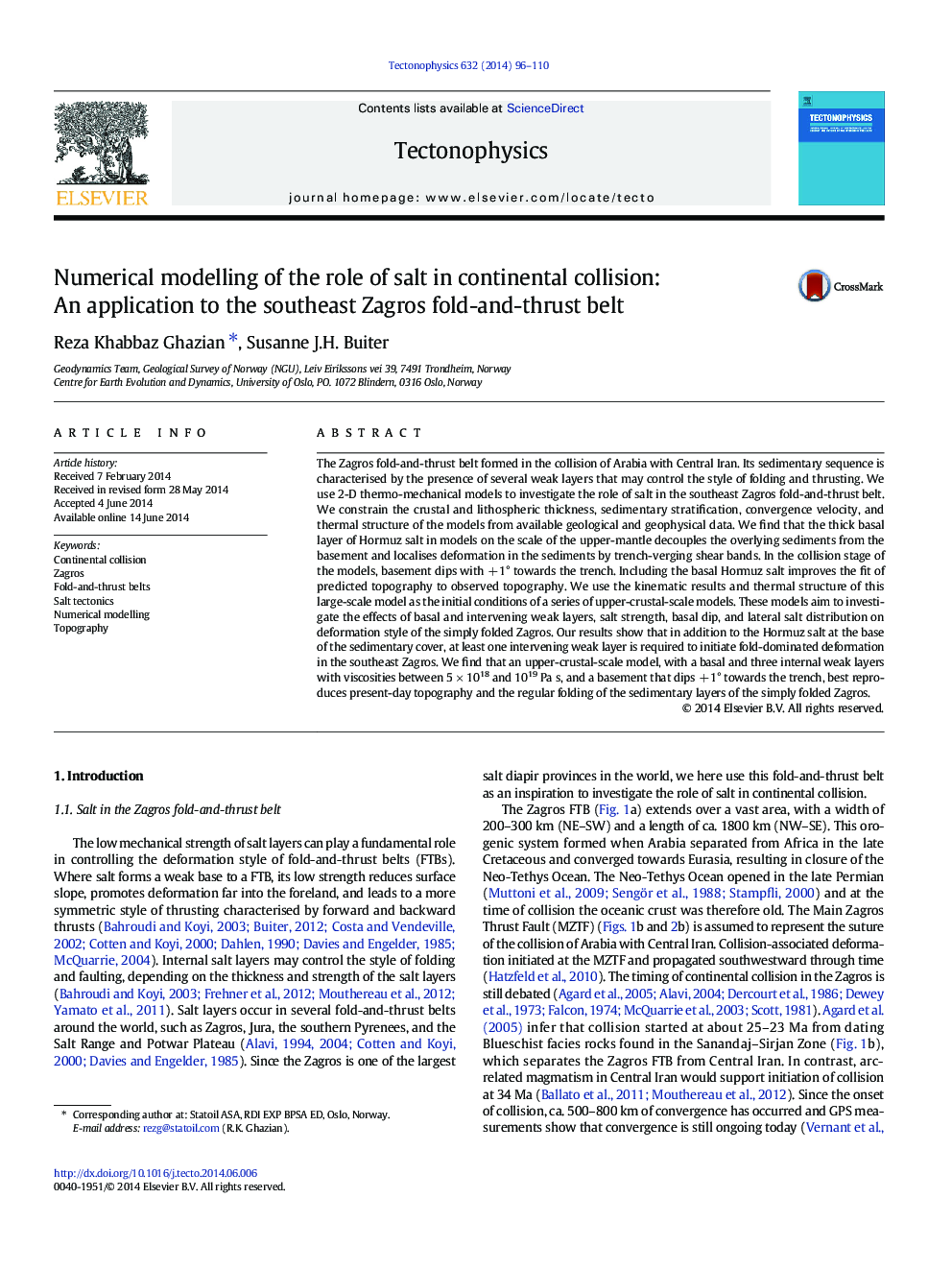| کد مقاله | کد نشریه | سال انتشار | مقاله انگلیسی | نسخه تمام متن |
|---|---|---|---|---|
| 4691852 | 1636759 | 2014 | 15 صفحه PDF | دانلود رایگان |
• We investigate the role of salt in the SE Zagros with 2D thermo-mechanical models.
• Large-scale collision models constrain the initial conditions of crustal models.
• Basal and intervening weak layers are required to initiate folding of sediments.
• Salt viscosity, salt distribution, and basement dip control SE Zagros topography.
The Zagros fold-and-thrust belt formed in the collision of Arabia with Central Iran. Its sedimentary sequence is characterised by the presence of several weak layers that may control the style of folding and thrusting. We use 2-D thermo-mechanical models to investigate the role of salt in the southeast Zagros fold-and-thrust belt. We constrain the crustal and lithospheric thickness, sedimentary stratification, convergence velocity, and thermal structure of the models from available geological and geophysical data. We find that the thick basal layer of Hormuz salt in models on the scale of the upper-mantle decouples the overlying sediments from the basement and localises deformation in the sediments by trench-verging shear bands. In the collision stage of the models, basement dips with + 1° towards the trench. Including the basal Hormuz salt improves the fit of predicted topography to observed topography. We use the kinematic results and thermal structure of this large-scale model as the initial conditions of a series of upper-crustal-scale models. These models aim to investigate the effects of basal and intervening weak layers, salt strength, basal dip, and lateral salt distribution on deformation style of the simply folded Zagros. Our results show that in addition to the Hormuz salt at the base of the sedimentary cover, at least one intervening weak layer is required to initiate fold-dominated deformation in the southeast Zagros. We find that an upper-crustal-scale model, with a basal and three internal weak layers with viscosities between 5 × 1018 and 1019 Pa s, and a basement that dips + 1° towards the trench, best reproduces present-day topography and the regular folding of the sedimentary layers of the simply folded Zagros.
Journal: Tectonophysics - Volume 632, 29 September 2014, Pages 96–110
